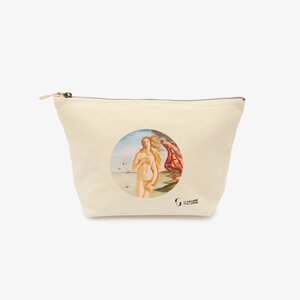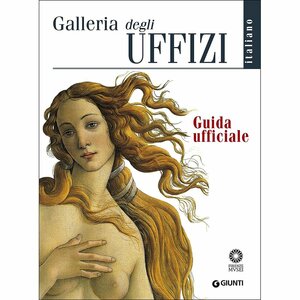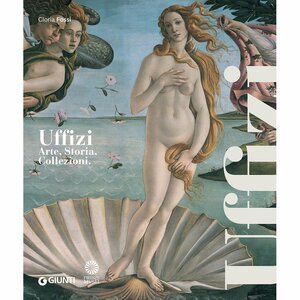A dynasty that has spanned eight centuries, a palazzo radiating all the grandeur of the Baroque, and an extraordinarily rich art collection: these are the elements of a true yet incredible story, one that spans the centuries and reaches us today. The address is Piazza SS. Apostoli 66 in Rome, home to Palazzo Colonna since the 14th century, named after the family who still reside there. This sumptuous residence houses one of the city’s most important art galleries.
Historical background of a resourceful and astute family
Originally from the village of the same name outside Rome, the Colonna family moved to the city around the 13th century, weaving a dense and fruitful web of relationships. Close to political, military and ecclesiastical power, they gradually secured prestigious titles and honours through strategic alliances, financial means, and shrewd marriage policies – even joining with their long-standing rivals, the Orsini family. Over the generations, senators, soldiers, and cardinals took turns in shaping their legacy.
Among the most notable figures of this long lineage is Oddone Colonna (1386–1431), who ascended to the papacy in 1417 as Pope Martin V, famed for returning the Holy See to Rome from Avignon and for promoting the reconstruction of the city following the Western Schism.
The Colonna family were often involved in the city’s affairs, for better or worse. During the Sack of Rome in 1527, their Palazzo was one of the few spared from the flames of Charles V’s troops, thanks to a familial tie to the emperor. In 1797, however, they came to the aid of the papal treasury to meet Napoleon’s onerous demands on Pope Pius VI in the Treaty of Tolentino – a move that cost the family valuable paintings, jewels, and silver.
Though renowned military leaders, they also displayed cultural and artistic sensitivity. Vittoria Colonna was a poet and muse to Michelangelo, who depicted her in his Giudizio Universale in the Cappella Sistina. Years later, another Michelangelo – Merisi, known as Caravaggio – found refuge thanks to Costanza Colonna, who helped him flee to Naples after the murder of Ranuccio Tomassoni.
Since the 17th century, the family have actively collected artworks, blending a passion for collecting with the desire to decorate their grand Roman residence and demonstrate their rank.

The Galleria Colonna and its artworks
Furnishings, tapestries, stuccoes, frescoes, paintings, statues, antiquities… Palazzo Colonna is an extraordinary example of Italian luxury and splendour.
The majestic Galleria occupies an entire wing of the building and holds a prominent place among major art collections thanks to its vast and varied catalogue: a remarkable core of Florentine and Venetian painting from the 16th century, Emilian works from the 17th century, Roman landscape views from the 16th–17th centuries, still lifes, Flemish works and a rich series of family portraits, portraits of illustrious figures and female beauties.

The initial collection, established by the art enthusiast Lorenzo Onofrio Colonna, was further enriched in 1718 with the marriage of Fabrizio Colonna and Caterina Zeffirina Salviati, whose dowry included over two hundred paintings collected by the Salviati family since the 16th century. These included works by Bronzino, Tiziano, Raffaello and Correggio. In the 19th century, further acquisitions were added, mainly from the Renaissance period. Although later sales and dispersals have prevented us from appreciating the collection in its entirety, they have not diminished its inestimable value. Let us now focus on some of the most representative works.
The masterpieces of Cosmè Tura
Three panels by Cosmè Tura, court painter to the Dukes of Ferrara, are preserved in the Galleria, offering precious insight into both the artist’s style and contemporary devotional practices.
I Santi Maurelio e Paolo e il vescovo Niccolò Roverella (c.1474) was part of a polyptych, now partially destroyed and dispersed among museums such as the National Gallery in London and the Louvre in Paris. The Colonna panel – thought to be the right wing of the original polyptych – depicts the two saints and, kneeling in the foreground, the commissioner’s brother, originally from the Church of San Giorgio fuori le Mura in Ferrara. The plasticity of the drapery, smooth and heavy, combined with the strong expressiveness of the figures, are hallmarks of Tura’s style, also recognisable in the other two panels.

The second panel is a Vergine Annunciata (1460–1465), purchased by Aspremo Colonna in the early 19th century. It was part of a small portable altar, likely commissioned by the Este family for private devotion. This explains the heraldic colours of the columns behind the Virgin, evoking theological virtues. This panel is also incomplete: the other two sections are held at the Cini Foundation in Venice and at the Poldi Pezzoli Museum in Milan, while the Announcing Angel, which was meant to occupy the left of the Colonna panel, has been lost. Yet this Annunciazione remains one of great intimacy and refinement and anticipates compositional solutions seen in Tura’s later Madonna col Bambino (c.1470–1475), known as the Madonna dello Zodiaco, also in the collection.
Here, the Virgin’s pose is identical, yet the scene depicts the Holy Family with features unusual to modern viewers. Its name derives from the zodiac signs – some of which are still partially visible – within the mandorla behind the Virgin. They begin with Capricorn-unicorn on the right and end with Virgo on the left. In Christian thought, astrology could reflect divine will in the sky, signalling Christ’s birth. Gilded in her hair and robes, the Virgin gazes upon the Child whose waking pose suggests his resurrection.
Bronzino and Michelangelo‑inspired allegories
Between 1553 and 1555 Bronzino painted, “for Mr Alemanno Salviati, a Venus with a Satyr nearby, so beautiful she truly seems Venus, goddess of beauty,” according to Vasari¹. This work, titled Venere, Cupido e Satiro and signed by the author, arrived at Palazzo Colonna at the beginning of the 18th century as part of Caterina Zeffirina’s dowry. It was commissioned to decorate a chamber in the noble Florentine’s palace alongside three allegories – Venere e Amore, La Notte and L’Aurora (all dating to around 1555) by Michele di Ridolfo Ghirlandaio. The series was ultimately reunited in Rome only after the spouses’ deaths, who never saw it complete.

Bronzino had previously painted other Venus and Cupid variants, now in the National Gallery in London, and the Szépművészeti Múzeum in Budapest.
The one in the Galleria Colonna is the latest chronologically and features a simplified composition than the other two, yet no less enigmatic: allegorical symbols are reduced, and the figures stand out in marble-like nudity, draperies, flowers and jewels. Its explicit sensuality must have shocked the prudish 18th-century public, prompting the hiring of Stefano Pozzi to apply posthumous drapery veils (later removed in the 2000 restoration) to conceal the goddess’s form.

The inspiration behind Michele di Ridolfo’s panels, on the other hand, is explicit: Salviati commissioned him to reproduce in painting the sculptures of the same name created by Michelangelo for the Sagrestia Nuova of San Lorenzo. His Venere too is directly derived from a design by Michelangelo – a preparatory cartoon never realised by the master and eventually completed by Pontormo, now in the Gallerie dell’Accademia.

Are you interested in articles like this?
Sign up for the newsletter to receive updates and insights from BeCulture!
Annibale Carracci and his Mangiafagioli
Let us conclude our overview on a more genuine note. Set against the Galleria’s opulent wall decoration, Annibale Carracci’s Mangiafagioli (c.1584–1585) seems almost out of place. Among the most original works in the collection, it portrays “a peasant eating beans,” according to a 17th-century inventory. In fact, in this genre scene we witness a farmer’s meal: caught off guard by an unexpected observer, he pauses with his mouth agape and his spoon suspended mid-air, letting a few drops of broth fall, while firmly grasping a piece of bread with his left hand, as if to protect it – an unusual image, striking for its genuine naturalism, especially in an era predominantly focused on noble, sacred or allegorical subjects.

Over the years the painting has been attributed to various artists, but today critics agree it is by Carracci, who was fond of everyday life scenes – as shown by works such as Ragazzo che beve (1598–1599, Cleveland Museum of Art, Cleveland) or the Grande macelleria (1585, Christ Church Gallery, Oxford).
Alongside its realism, the Mangiafagioli introduces an ironic contrast: behind the jug – awkwardly placed – is a refined glass of wine, inappropriate for the peasant’s social status and therefore hidden from his view. Whatever the reason behind this choice, what is certain is that with this painting Annibale was ahead of his time, creating a precedent that would later be taken up by other artists (it’s impossible not to think of the Mangiatori di patate by Van Gogh!).
A visit to the Galleria Colonna typically lasts around three hours, but its artworks and the Palazzo’s magnificence will remain with you long afterwards.
1. Giorgio Vasari (1511–1574), artist, architect and writer at the Medici court, was also the author of Le vite de’ più eccellenti architetti, pittori, et scultori italiani, da Cimabue insino a’ tempi nostri (published in 1550 and expanded in 1568), a foundational text in the history of Italian art.










